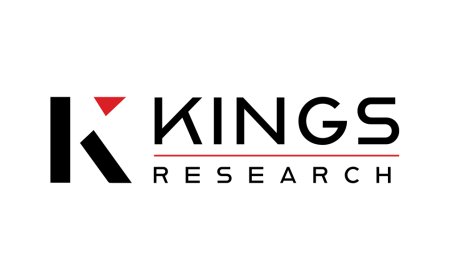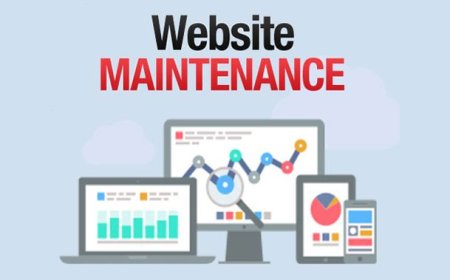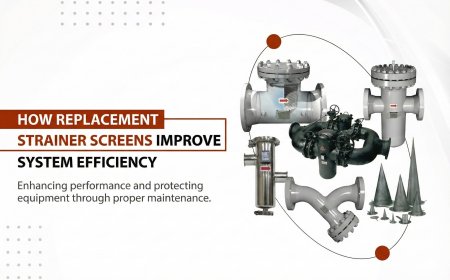How Business Central Partners Help Manufacturers Achieve End-to-End Supply Chain Visibility
This is where Microsoft Dynamics Business Central Partners play a pivotal role. By leveraging the powerful ERP capabilities of Dynamics 365 Business Central, these specialized partners enable manufacturers to integrate and streamline their supply chain processes, achieving unparalleled visibility and control.

In todays highly competitive manufacturing landscape, supply chain visibility is no longer a luxury its a necessity. Manufacturers need real-time, accurate insights across their entire supply chain to optimize operations, reduce costs, manage risks, and meet customer expectations. However, achieving end-to-end supply chain visibility is a complex challenge, often hindered by fragmented systems, siloed data, and lack of integration.
This is where Microsoft Dynamics Business Central Partners play a pivotal role. By leveraging the powerful ERP capabilities of Dynamics 365 Business Central, these specialized partners enable manufacturers to integrate and streamline their supply chain processes, achieving unparalleled visibility and control. This article explores how Microsoft Dynamics Business Central partners help manufacturers gain end-to-end supply chain visibility, driving operational excellence and business growth.
The Importance of End-to-End Supply Chain Visibility for Manufacturers
Supply chain visibility means having a transparent view of every stage in the supply chain from raw material procurement and production scheduling to inventory management, distribution, and delivery. For manufacturers, this visibility translates into:
-
Improved Demand Forecasting: Accurate insights into customer orders and market trends help manufacturers align production with demand, reducing excess inventory and stockouts.
-
Enhanced Supplier Collaboration: Visibility into supplier performance and material availability allows proactive risk management and better negotiation.
-
Optimized Inventory Levels: Real-time data prevents overstocking and understocking, lowering holding costs and improving cash flow.
-
Streamlined Operations: Identifying bottlenecks and inefficiencies enables manufacturers to optimize workflows and improve throughput.
-
Increased Customer Satisfaction: Faster response times and accurate order fulfillment build trust and brand loyalty.
-
Risk Mitigation: Early detection of disruptions or delays allows manufacturers to implement contingency plans and avoid costly downtime.
Despite these benefits, many manufacturers struggle to achieve such visibility due to disconnected legacy systems, manual processes, and disparate data sources.
How Microsoft Dynamics Business Central Partners Bridge the Visibility Gap
Microsoft Dynamics Business Central is a comprehensive cloud-based ERP solution designed to unify business processes across finance, manufacturing, supply chain, sales, and service. However, unlocking its full potential requires expertise in implementation, customization, and ongoing support the core competencies of microsoft dynamics business central partners.
Heres how these partners help manufacturers achieve supply chain visibility:
1. Integrated End-to-End Solutions
Business Central partners understand manufacturers unique supply chain challenges and tailor Dynamics 365 Business Central to provide a unified platform. By integrating procurement, production, inventory, and sales modules, partners eliminate data silos and ensure seamless information flow.
For example, purchasing data is linked with inventory and production schedules, enabling manufacturers to track raw material status alongside planned manufacturing runs. Sales orders are automatically connected to inventory availability, helping production teams prioritize orders and adjust capacity accordingly.
2. Real-Time Data and Analytics
Microsoft Dynamics Business Central provides robust reporting and analytics capabilities, but partners enhance these by integrating Power BI dashboards and custom reports. This enables manufacturers to access real-time, visual insights into supply chain metrics such as:
-
Supplier lead times and on-time delivery rates
-
Inventory turnover ratios
-
Production cycle times
-
Order fulfillment status
-
Demand forecasts versus actual sales
With this data at their fingertips, decision-makers can quickly identify issues, understand trends, and make data-driven decisions to optimize the supply chain.
3. Advanced Inventory Management
Inventory accuracy is critical for supply chain visibility. Business Central partners configure advanced inventory features such as:
-
Lot and serial number tracking for full traceability
-
Multi-location inventory management across warehouses and plants
-
Automated replenishment and reorder point calculations
-
Barcode scanning and mobile warehouse management integration
These capabilities provide granular control over inventory movements and status, ensuring manufacturers always know what inventory is available, where it is, and when it needs to be replenished.
4. Supply Chain Collaboration and Vendor Management
Microsoft Dynamics Business Central partners implement vendor portals and collaboration tools that connect manufacturers with their suppliers in real time. This allows:
-
Sharing forecasts and demand plans with suppliers
-
Tracking purchase order status and delivery schedules
-
Automating supplier performance evaluations and scorecards
Such collaboration reduces lead times, minimizes stockouts, and strengthens supplier relationships, which are key for resilient supply chains.
5. Automation and Workflow Optimization
Partners leverage Business Centrals workflow automation capabilities to streamline supply chain processes. Examples include:
-
Automating purchase order approvals based on inventory thresholds
-
Triggering alerts for delayed shipments or production bottlenecks
-
Synchronizing production schedules with material availability and customer demand
These automated workflows reduce manual errors, accelerate process cycles, and improve supply chain responsiveness.
6. Scalable Cloud Infrastructure
Business Centrals cloud-based architecture ensures manufacturers can scale their supply chain management capabilities as their business grows. Microsoft Dynamics Business Central partners help design flexible solutions that support multi-site operations, global distribution, and seasonal demand fluctuations without expensive infrastructure investments.
Industry-Specific Customizations by Business Central Partners
Manufacturing sectors vary widely discrete, process, batch, and mixed-mode manufacturing all have distinct supply chain complexities. Microsoft Dynamics Business Central partners offer tailored customizations to address industry-specific requirements:
-
Discrete Manufacturing: Partners implement production order tracking, capacity planning, and shop floor integration.
-
Process Manufacturing: Recipe and batch management modules are configured to control ingredients and quality.
-
Distribution and Wholesale: Partners focus on demand forecasting, warehouse management, and logistics optimization.
Such customizations ensure manufacturers achieve supply chain visibility relevant to their operational model.
Benefits Manufacturers Experience Through Microsoft Dynamics Business Central Partners
Manufacturers that partner with experienced Microsoft Dynamics Business Central partners unlock numerous advantages:
-
Faster Time-to-Value: Expert implementations reduce deployment time and user adoption challenges.
-
Reduced Costs: Improved inventory management and supplier collaboration lower operational expenses.
-
Enhanced Agility: Real-time insights and automated workflows enable quick responses to market changes.
-
Improved Compliance: Accurate traceability supports regulatory audits and quality standards.
-
Ongoing Support: Partners provide training, troubleshooting, and system upgrades to maintain optimal performance.
Real-World Success Stories
Case Study 1: A Mid-Sized Electronics Manufacturer
A U.S.-based electronics manufacturer partnered with a Microsoft Dynamics Business Central partner to unify their fragmented supply chain systems. The partner integrated procurement, inventory, and production modules, enabling the company to gain real-time visibility into raw materials and work-in-progress inventory. With Power BI dashboards customized by the partner, the management team could forecast demand more accurately and reduce stockouts by 25% within six months.
Case Study 2: Food and Beverage Manufacturer
A food manufacturer required lot tracking and compliance with strict food safety regulations. The Microsoft Dynamics Business Central partner configured Business Central to manage batch production, lot tracking, and quality control workflows. As a result, the manufacturer improved traceability, accelerated recall processes, and enhanced supplier collaboration, ensuring product safety and customer trust.
Selecting the Right Microsoft Dynamics Business Central Partner
Choosing the right partner is crucial for maximizing supply chain visibility benefits. Manufacturers should look for partners with:
-
Deep industry experience in manufacturing and supply chain management
-
Proven track record with successful Business Central implementations
-
Strong expertise in Power BI and workflow automation
-
Comprehensive post-implementation support services
-
Ability to tailor solutions for specific operational needs
Conclusion
End-to-end supply chain visibility is a game-changer for manufacturers looking to optimize operations, reduce risks, and drive growth. Microsoft Dynamics Business Central partners are uniquely positioned to help manufacturers unlock this visibility by delivering integrated, real-time, and scalable supply chain solutions.
By leveraging the powerful capabilities of Dynamics 365 Business Central combined with expert partner customizations and support, manufacturers can transform their supply chains into agile, transparent, and resilient competitive advantages ready to meet the challenges of todays dynamic market.








































